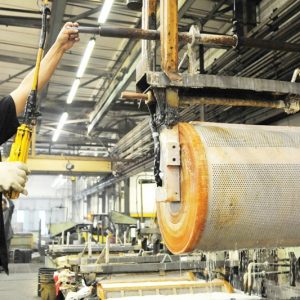Plating and coating are two industrial techniques that are used for covering the surface of a part or object, also known as the substrate. There are a number of differences when it comes to the method of application, covering materials and uses, but the most notable difference is that plating occurs only on conductive surfaces, whereas coating can be used on both conductive and non-conductive surfaces.
Key Aspects of Coating
Coating is the covering of a surface (also known as a substrate) with a range of materials. Coating materials can range from gases to solids and liquids. It typically involves applying a thin layer, which might include anything from paper and film to paint. Coating can be carried out with simple brushwork or with the use of advanced machinery. However, advances in industrial coating include electroless nickel coating, which is available at leading UK surface treatment specialists such as Poeton. Coating is used primarily to improve the durability, water resistance and corrosion resistance of a surface but also to improve adhesion. Coating can be carried out on both conductive and non-conductive surfaces.
Key Aspects of Plating
Plating involves covering a surface with metal. Plating is typically carried out with the use of an external electrical current – a method known as electroplating. But it can also be carried out with sputter or vapour deposition. Plating is used to harden surfaces, inhibit corrosion, to make conductive adjustments, to improve solderability, for friction reduction, as radiation shielding and sometimes simply to improve the appearance of a part or product. Plating can only be carried out on conductive surfaces.
How to Choose Between Coating and Plating
When it comes to choosing between coating and plating, it’s not usually a matter of looking at the pros and cons of each method (e.g. price), but rather looking at the specific material of the substrate and the reasons you need to cover the surface. Start by contacting a surface treatment specialist, who will help you decide which method is right for you.
These two methods are quite different in their application process and the materials used but often have a similar protective result. Whether you choose to coat or plate your parts or products, be sure to use a quality specialist who will find the perfect solution for your needs.






